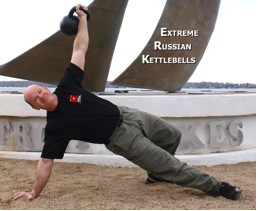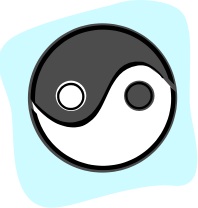The Tao of Hardstyle
Grandmaster Jon Engum, Sr. RKC
April 29, 2010 07:50 AM

I see said the blind man as he picked up his hammer and saw. What do you see? If three men were to describe an elephant without the benefit of sight one might feel only the elephants' tail, he will describe the animal as snake like. Another may feel only the elephants' trunk and say it is like a tree limb, and yet another may feel the body and argue that the animal is as massive as a wall. Until one has the chance to experience and explore the whole creature, they really have no means of giving an accurate description. Much more lies beneath the surface.
Pavel has defined the RKC Kettlebell user style as "Hardstyle", the name derived from a Martial Arts background. In the Martial Arts world "Hardstyle" refers to a direct aggressive fighting style that focuses on muscular force to get the job done, like most forms of Karate. Softstyle is a more defensive – passive style, relying on redirection and flowing counter attacks, think Tai Chi. However these may be interpreted, the name is the tip of the iceberg. For the casual observer, the "Hardstyle" label renders images of full and total tension 100% of the time but he does not, let's say, see the trees for the forest.
The Yin and Yang of TensionAll good, complete systems have both elements of soft and hard in them if you study the system in its entirety. There must be a balance. To explain this, check out a common eastern symbol – the Yin and Yang. Everything is balanced and equal but in a constant state of change.

Nothing is all Yin or all Yang but everything seeks balance – dualism of the cosmos – hot and cold, water and fire, tension and relaxation. Also notice that even in the predominately Yang section lies a small piece of the Yin counterpart. All hardstyle martial arts have elements of soft style and vice versa, if they don't or more accurately if they are misunderstood and practiced or performed incorrectly we lose the system and go back to the blind guy thinking the elephant is snake like.
Laws of nature have no pity! How does this relate to Kettlebells, bear with me as I relive some glory days.
Back when I was competing in open martial arts tournaments I would occasionally get to fight opponents who misinterpreted their system. There are basically two different aspects of traditional martial arts competition, forms (kata) and sparring. In forms the student goes through a specifically choreographed routine, pausing on each move to show mastery of stance, power, breath control and focus. To see someone well versed at this is incredible, where the error came in is when a person would try to spar this way, and fail miserably. I am sure you have all seen the old Kung Fu Chop Sockey films; you know the ones that used to play on Sunday afternoon cable. To be a good Kung Fu flick, they had to have incredible sound effects and the lips must never match the dialogue. Anyway, most of the film fighting was punch, pause then kick, pause, curse the opponents ancestors to the 100th generation, more stop and go fighting – perfect form – great power and wonderful entertainment for the movies or for forms competition , but not for realistic sparring.
The guys who fought this way in competition got killed – their tin man fighting style was not alive, you must be more fluid like a boxer than a robot, they were all tension without the Yin of relaxation.
What does this have to do with Kettlebells and lifting? If you have all tension you cannot move well and if you have all relaxation, you cannot move at all. Both elements must be in harmony. All things have a time and a place. Athletic movement is the combination of tension and relaxation – they must work together.
Balance in BallisticsTake the kettlebell swing, the swing starts with blast of tension in the initial hip drive, then there is a relaxed transmission of power until the lockout. At the lockout, we need spilt second, explosive, full body tension similar to a punch, but the swing like the punch does not end at the apex. It must be rechambered as fast or faster then the upward phase. In the swings case, this overspeed eccentric motion will stretch-load the hips and hamstrings and set up the next rep. The tension/relaxation cycle of the swing is dynamic, ballistic, and easy to see and feel.
Balance in GrindsNow let's look at a grind, the clean and press. While it may not been as apparent that there is a yin- yang tension cycle during the press , try one and look again at it – it is there – more like the little dot of yin in the yang section but it exists.
Start with the clean. There is the tension of the hip drive – relaxation as the bell travels through the air– super tense as the bell lands into the rack to absorb and redirect the force into the press proper. Press with super- tension at the "sticking point", then relaxed tension at the lockout. Yes - the grind lifts are a little more like the Kata guy but in the RKC system what do you do between grinds during rest periods? To add the harmony all complete systems need we use the often overlooked, fast and loose drills. Vibrations and shake outs are not to be thought of as just killing time between sets but should be treated as a balancing aspect to the tension of the grind.
The Tao of Hardstyle = balanced harmonic training using the complete system. Study this well.
Jon Engum, Senior RKC currently holds a 7th Dan in Taekwondo a 4th Dan in Hapkido and a 4th Dan in Kumdo. He owns and Operates Engum's Taekwondo Association. He is a and teaches ongoing Kettlebell Classes in Brainerd, MN and Detroit Lakes, MN as well as Kettlebell and Flexibility Seminars worldwide. Contact
info@extremetraining.net.
Back